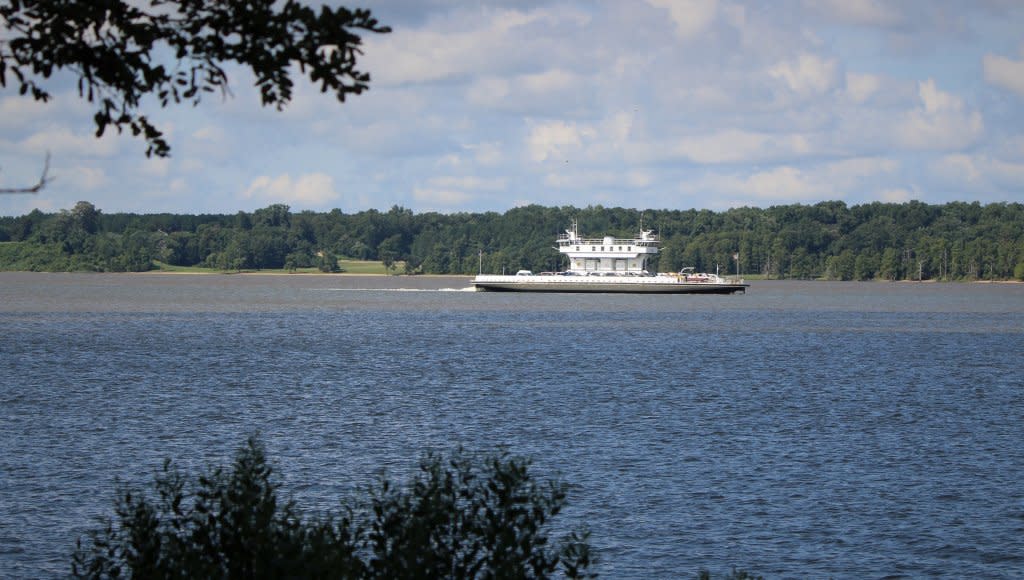Jamestown-Scotland Ferry service back on track

A state-run ferry crosses the James River between Surry and James City County in July 2019. (Sarah Vogelsong/Virginia Mercury)
Passengers worried their summer travel plans would be disrupted by a schedule change to the ferry service over the James River will now have smooth sailing after all.
Last month, the Virginia Department of Transportation announced a reduced schedule to begin on July 8 because the service for the Jamestown-Scotland Ferry lacked a certified chief engineer and had employees on protected leave statuses.
But the issue has been resolved at least for now.
“VDOT has been working hard to address this critical staffing situation and was able to reach sufficient staffing levels at the end of last week to sustain full-service operations at this time,” said Brittany McBride Nichols, a spokeswoman for VDOT’s Hampton Roads District, in a statement.
However, VDOT, like similar services across the country, is still facing a shortage of people to fill maritime positions.
Nichols said the total number of engineer positions for the ferry includes 10 full-time positions, one full-time contractor and four hourly positions.
As of July 1, the ferry has two full-time VDOT vacancies and one full-time contractor vacancy for the ferry chief engineer positions.
“As [the chief engineer] position is required by the United States Coast Guard to operate the vessel, it is critical that we fill as many of our open positions as possible immediately to avoid any future schedule changes,” Nichols said.
Certified chief engineers are required to have extensive training, complete a specific engineering exam successfully, and have more than 10 years of experience to earn the necessary credentials.
While this combination of advanced training and substantial experience ensures that chief engineers are highly qualified to maintain the safety and reliability of the ferry service, Nichols said the requirements have made the position more challenging to fill.
Last year, the federal government announced a strategic plan to address mariner recruitment, training, and retention concerns. Some strategies include developing new mariner apprenticeship programs, identifying barriers for potential students to participate in the federal student aid programs by maritime institutions, and increasing federal support for maritime K–12 programs.
David White, executive director for the Virginia Maritime Association, said the shortage is a symptom of a more significant issue for the maritime industry.
“Until more people know about and take [an] interest in the many financially and personally rewarding career opportunities … throughout our maritime and supply chain industries, positions that affect our everyday lives will go unfilled,” White said in a statement.
He added that the association is working to address the issue by introducing more students, specifically in K-12, to the opportunities available “right in their backyard that will allow them to participate in the economic engine of our region.”
Last year, the ferry, which is free, saw an average of 2,185 vehicles per day travel across the river, an increase from the 1,922 vehicle trips in 2020.
The ferry service has grown in popularity since the pandemic but has not reached its pre-pandemic ridership average of 2,506 trips per day in 2019.
GET THE MORNING HEADLINES DELIVERED TO YOUR INBOX
The post Jamestown-Scotland Ferry service back on track appeared first on Virginia Mercury.

